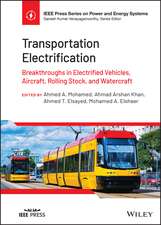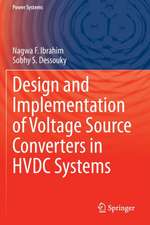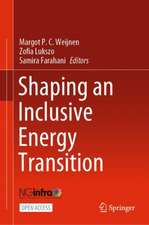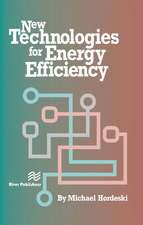Energy Positive Neighborhoods and Smart Energy Districts: Methods, Tools, and Experiences from the Field
Editat de Antonello Monti, Dirk Pesch, Keith Ellis, Pierluigi Mancarellaen Limba Engleză Paperback – 25 sep 2016
- A complete simulation library to quickly support the implementation of a model of the scenario
- A set of possible approaches to neighborhood energy optimization
- An open, extensible information model for neighbourhood asset description
- Delivers a significant amount of exclusive knowledge on the topics of energy positive neighborhoods and smart energy districts
- Allows readers to grasp the complexity of this interdisciplinary topic by providing access to well-structured processes and tools
- Includes real life examples of the transformation of two demonstration sites that illustrate the concepts discussed to add context and value to their implementation
Preț: 397.94 lei
Preț vechi: 432.55 lei
-8% Nou
Puncte Express: 597
Preț estimativ în valută:
76.14€ • 79.50$ • 63.02£
76.14€ • 79.50$ • 63.02£
Carte tipărită la comandă
Livrare economică 29 martie-12 aprilie
Preluare comenzi: 021 569.72.76
Specificații
ISBN-13: 9780128099513
ISBN-10: 0128099518
Pagini: 300
Dimensiuni: 191 x 235 x 18 mm
Greutate: 0.64 kg
Editura: ELSEVIER SCIENCE
ISBN-10: 0128099518
Pagini: 300
Dimensiuni: 191 x 235 x 18 mm
Greutate: 0.64 kg
Editura: ELSEVIER SCIENCE
Public țintă
Energy engineers, Energy efficiency decision makers, Energy Practitioners, ICT vendors in the building industry, Energy students and researchersCuprins
Chapter 1: Introduction
Chapter 2: Energy positivity and flexibility in districts
Chapter 3: Description of the process needed to achieve EPN, Roadmap
Chapter 4: Simulation and Optimisation
Chapter 5: ICT infrastructure implementation
Chapter 6: Business cases
Chapter 7: Real life experience
Chapter 8: Future –Gaps, Barriers, Challenges and Opportunities related to development of Energy Positive Neighbourhoods and Smart Energy Districts (conclusion)
Chapter 2: Energy positivity and flexibility in districts
Chapter 3: Description of the process needed to achieve EPN, Roadmap
Chapter 4: Simulation and Optimisation
Chapter 5: ICT infrastructure implementation
Chapter 6: Business cases
Chapter 7: Real life experience
Chapter 8: Future –Gaps, Barriers, Challenges and Opportunities related to development of Energy Positive Neighbourhoods and Smart Energy Districts (conclusion)
























